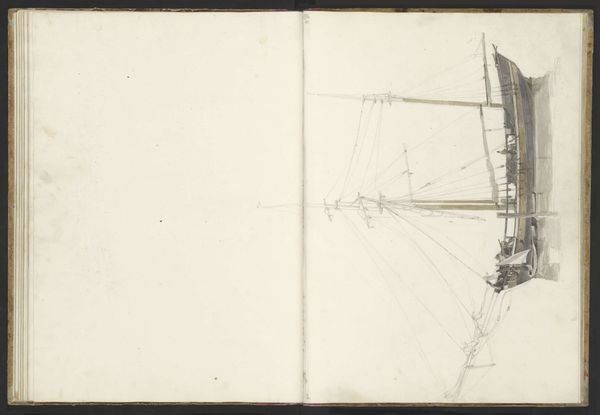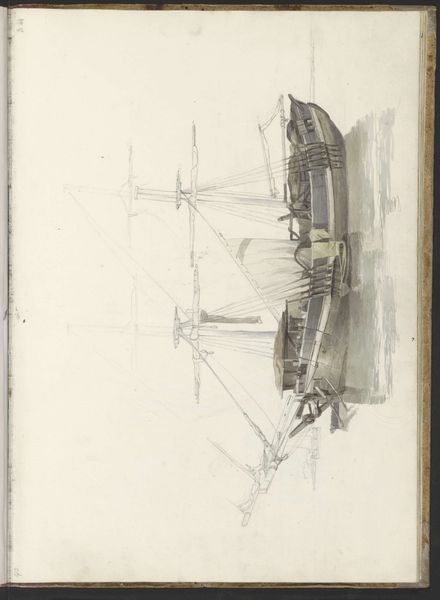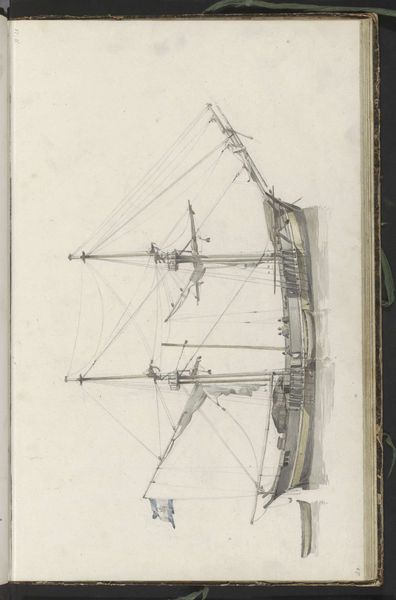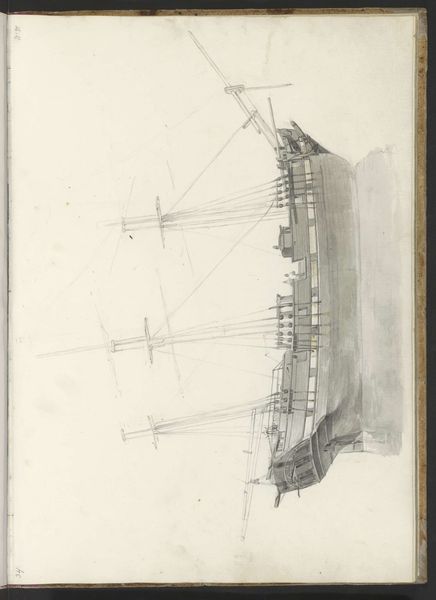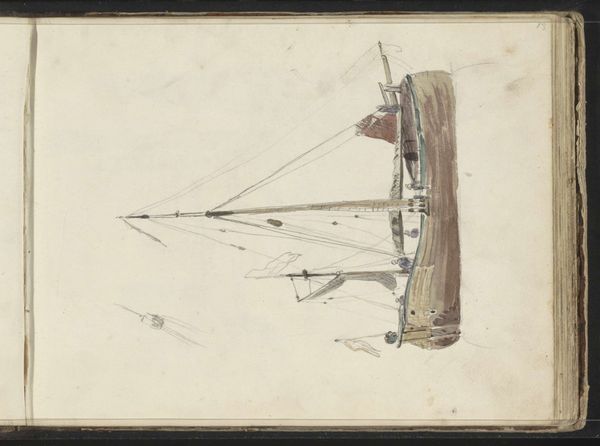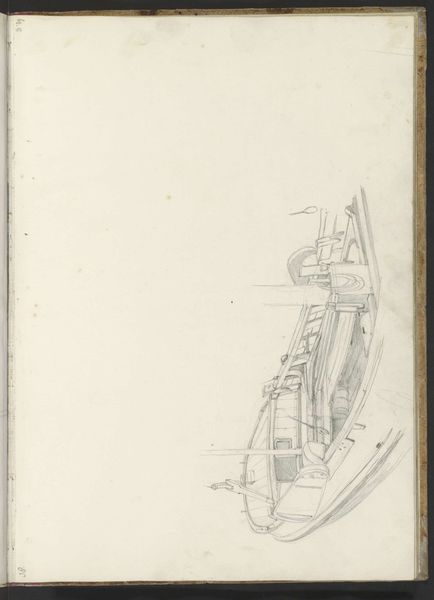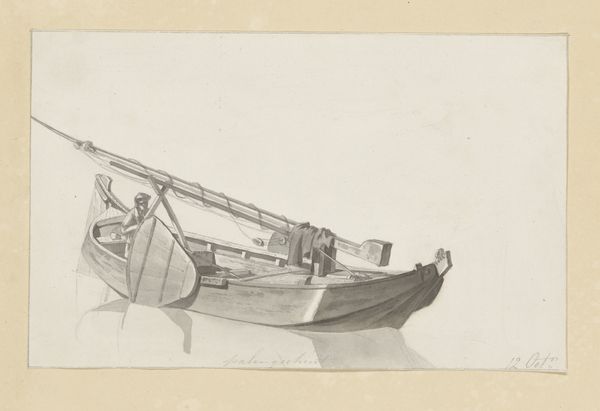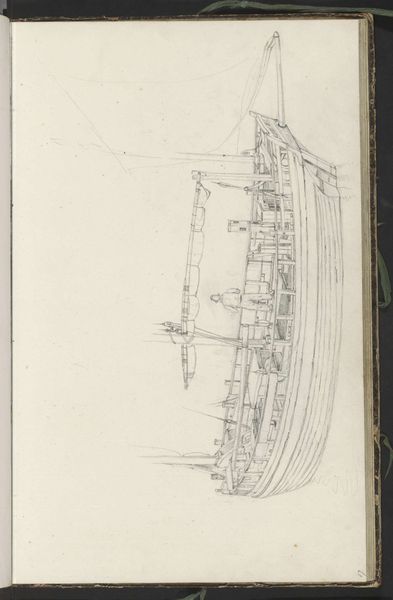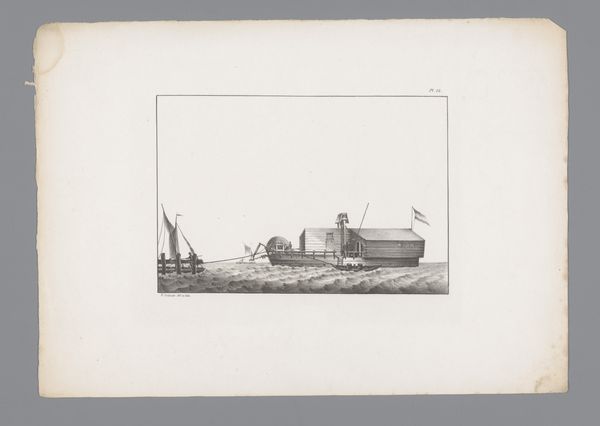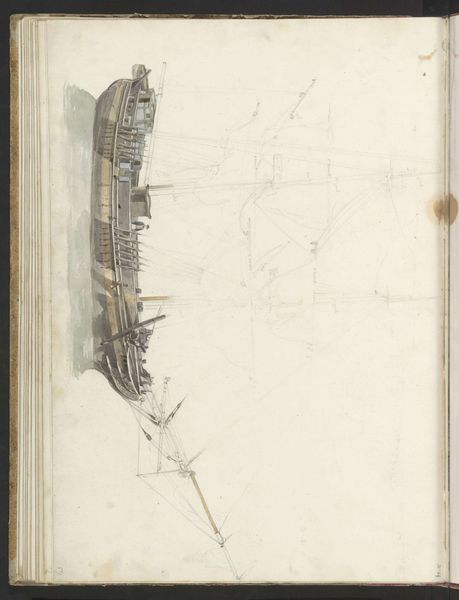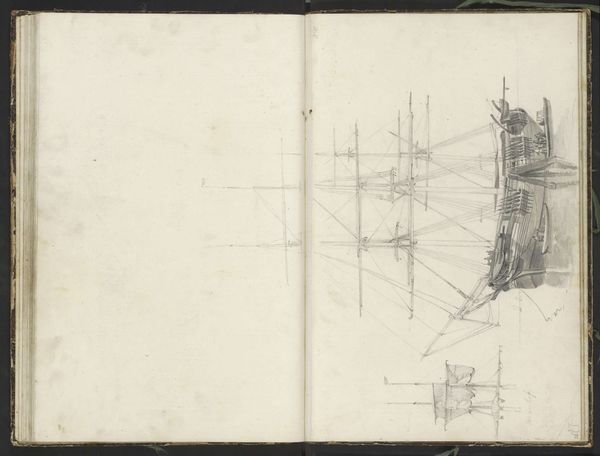
drawing, pencil
#
drawing
#
pencil sketch
#
landscape
#
pencil
#
realism
Copyright: Rijks Museum: Open Domain
Curator: A drawing, capturing the decorated bow of a sailing ship, crafted between 1797 and 1838 by Johannes Christiaan Schotel. It’s currently housed right here at the Rijksmuseum. Editor: There’s an undeniable ghostliness to this sketch. The pencil lines are so delicate; the ship seems to emerge from the blank paper like a forgotten memory. Curator: That ephemeral quality is interesting to note. Naval power during this period signified more than just maritime dominance; it was tied directly to global trade networks and the expansion of colonial empires. Editor: True, but I'm drawn to how Schotel employs line and shadow. See how the detailed pencil work captures the texture of the wood, the intricate rigging? It’s less about the grand narrative of empire, more about the elegance of maritime design. Curator: Though, considering that Schotel’s artistic journey mirrored the shifting tides of Dutch maritime history, his focus isn’t apolitical. From the Napoleonic wars to the rise of industrialization, each stroke of his pencil reflected societal attitudes towards seafaring. These drawings held political potency within artistic and publishing circles of the Netherlands. Editor: A fair point. I can’t ignore the way Schotel has chosen to highlight particular details while allowing others to fade into the background. That concentrated area, where light and shadow meet at the ship's prow, makes it quite visually arresting. The strategic use of the untouched paper really helps accent that part of the hull. Curator: Also consider that artists of the time would often create these kinds of studies to prepare for larger, more politically charged canvases. Editor: Right. So this could be an earlier glimpse into what interested Schotel, maybe the design aspects he felt carried a larger societal implication. It is indeed fascinating how he has transformed the utilitarian form of a warship into an object of austere beauty. Curator: The artwork exemplifies the nexus between artistry and power that informed Dutch society during that age. Editor: Ultimately, it's a quiet but potent reminder of the intersection between craftsmanship and history.
Comments
No comments
Be the first to comment and join the conversation on the ultimate creative platform.



